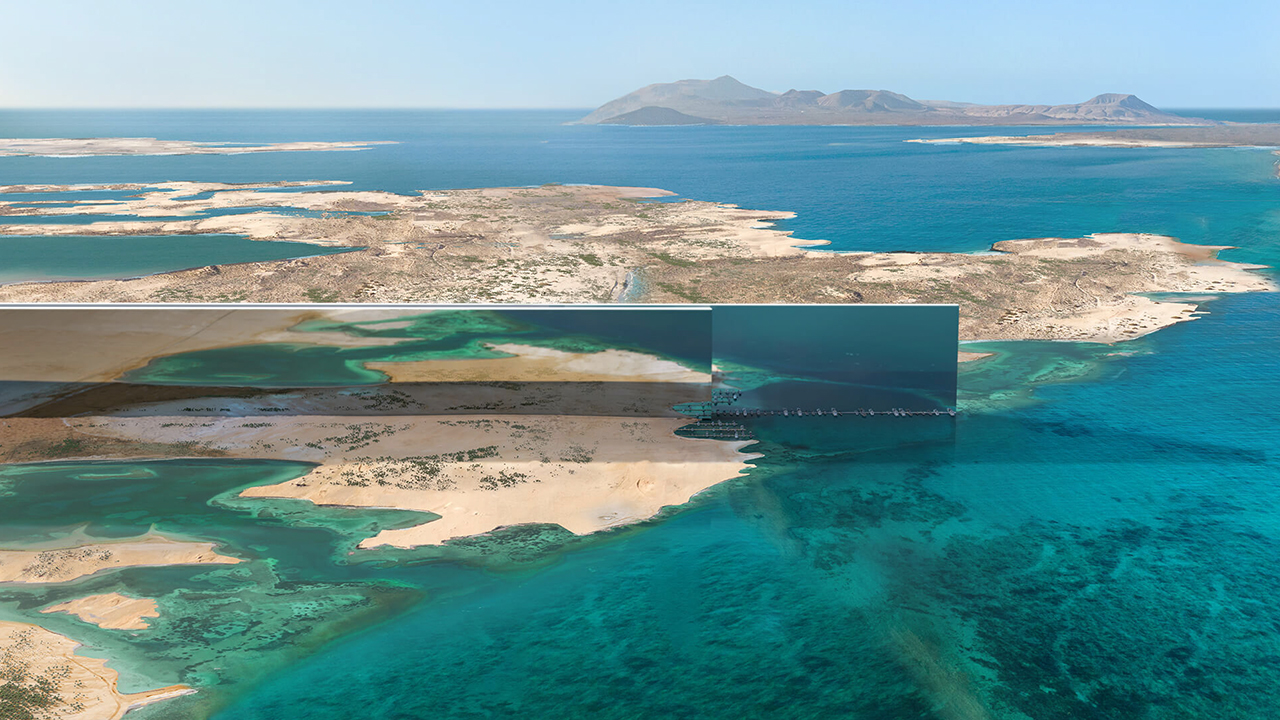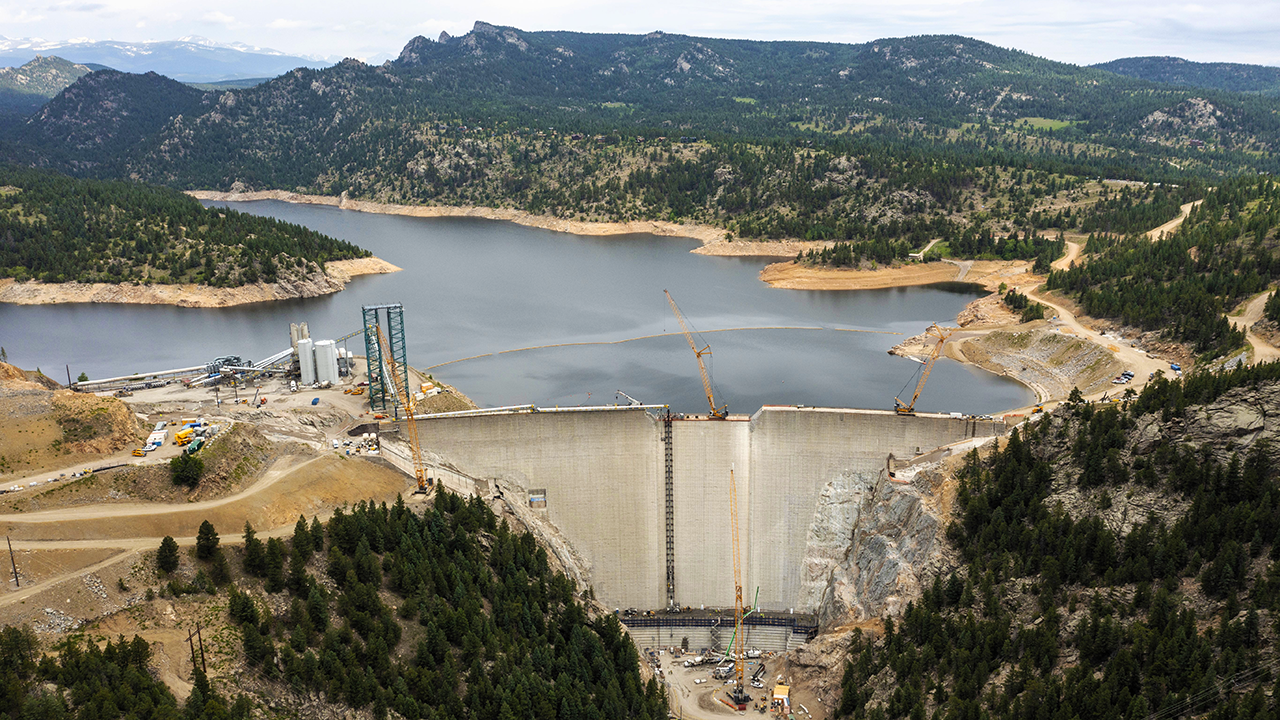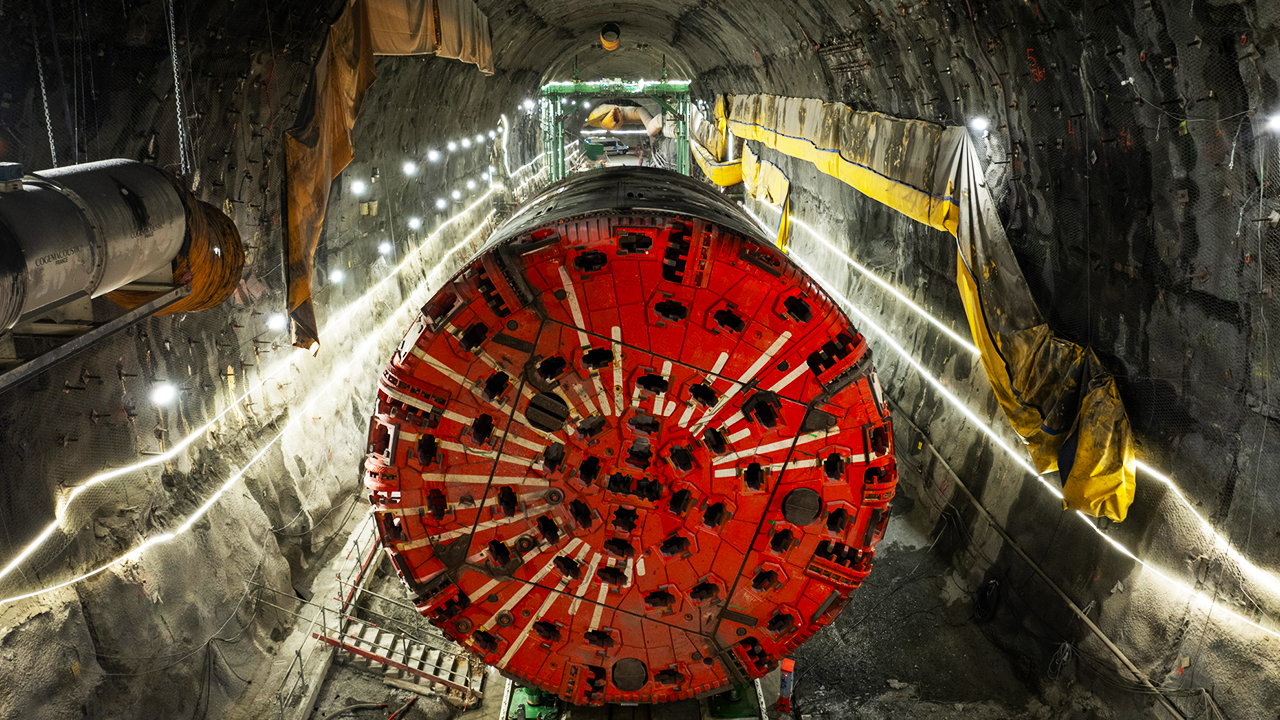Inside Europe’s Most Remote Construction Site
- Youtube Views 1,883,263 VIDEO VIEWS
Video narrated and hosted by Fred Mills. This video contains paid promotion for Schindler.
CONSTRUCTION sites don’t get much tougher than this.
Temperatures in Jungfraujoch, found high up in the Swiss Alps, drop to a bone-chilling -7°C, creating treacherous, icy surfaces. Surrounded by steep inclines on all sides and at altitudes of nearly 3,600 metres, you’ll have a hard time catching your breath.
Dug right into the top of a mountain is the Sphinx Observatory, the highest facility of its kind in Europe. It's here that ground breaking research is being carried out in mankind’s mission to learn more about our universe and everything about this site is a reminder of the power of engineering.
High up in the clouds, it’s eight Empire State Buildings or 11,670 Toblerones above sea level, making it one of the most remote observatories on the planet.
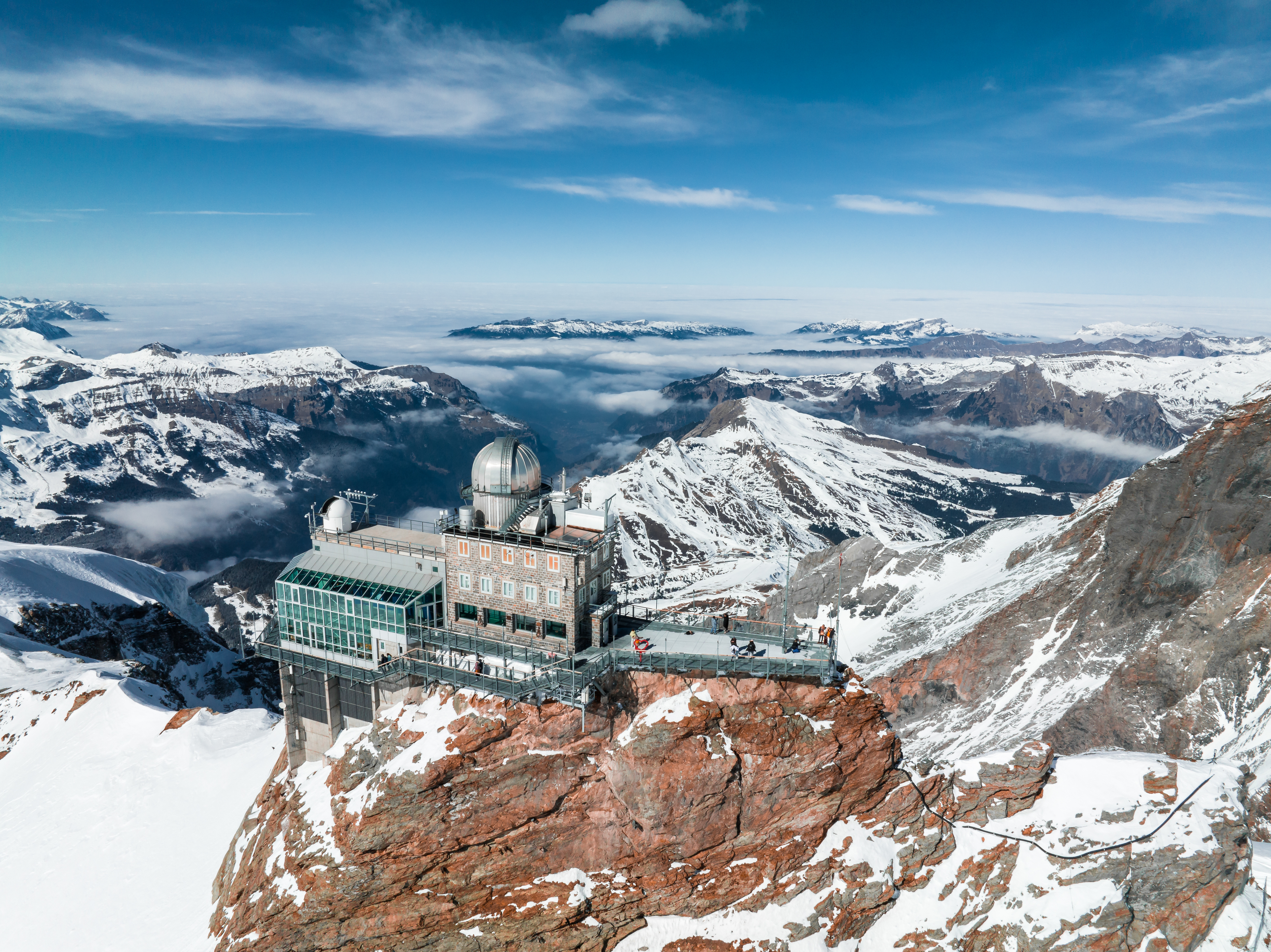
Above: The Sphinx Observatory is found 3,571 metres above sea level in the Swiss Alps.
Welcome to the Top of Europe
The Sphinx Observatory is built in an area known as The Top of Europe. Freezing cold, remote and light on oxygen, the question is, why would you build here?
Well, scientists on the site are using infrared energy to see objects that are too cool or faint to be seen in visible light - and at a lower altitude, that energy gets absorbed by the atmosphere. At this height, the atmosphere is thinner because of the extreme altitudes.
Martin Steinbacher is a Senior Scientist for the Swiss Federal Laboratories for Materials Science and Technology (Empa) and regularly works from the observatory:
"Some of our measurements are part of the global atmosphere watch programme and there are only around 30 spots like this worldwide that have such an extended set of measurements at such a remote location. This is a really unique place that allows us to do very unique measurements."
If you’re spending time here, it doesn’t hurt that the observatory shows stunning views in all directions, which is a convenient perk that comes with being built into the peak of a mountain.
It’s lodged into a rock summit called the Sphinx, positioned on a seriously sheer cliff face and terrifyingly, this gravity-defying building was constructed back in 1937.
To stand up to the constant stream of scientists coming to the area to research, they engineered it out of steel and reinforced concrete. Given it’s still standing 88 years later, despite constantly fighting the elements, it's fair to say they did a pretty good job.
But a key issue remains: how on earth do you get to such a remote location?
The Journey to the Sphinx Observatory
Jungfraujoch Station is Europe’s highest train station. It was constructed as the culmination of the mountain railway fever that had swept through Switzerland.
But work on this 7km tunnel started way before the Sphinx Observatory was ever destined to sit atop the mountain - they started digging it in the late 1800s.

Above: Jungfraujoch Station is the highest railway station in the whole of Europe. Courtesy of Jungfrau Railways.
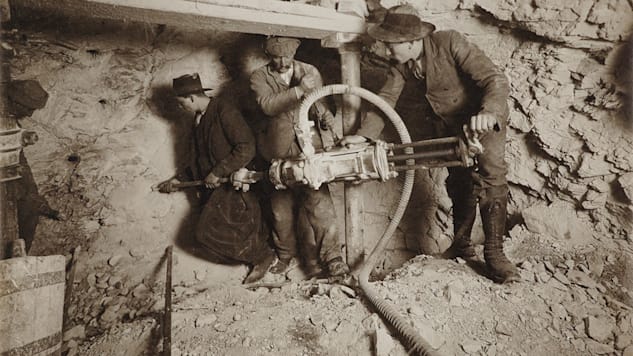
Above: Workers tunnelled through the Alpine rock with pick axes, drills and explosives. Courtesy of Jungfrau Railways.
With no tunnel boring machines on hand, the team had to tunnel through Alpine Rock the old fashioned way. Working on this site year round would've been brutal, with temperatures regularly dropping to -7°C.
They chipped and blasted their way through the Eiger, Mönch and Jungfrau mountains, excavating the tunnel using pick axes and explosives. This task took a gruelling 16 years, during which 30 workers lost their lives, often because of blasting accidents.
There were multiple strikes and the construction management changed eight times. In an attempt to improve the mood, workers were offered a bottle of wine each, every day.
The 9.3km route along the Jungfrau Railway starts in Kleine Scheidegg, the connection point to the Wengernalp Railway. There’s then a five minute ride on an open-air section of rail before reaching Eigergletscher, or Eiger Glacier Station, more than 2,300m above sea level.
For the first section of the journey, you can opt to take the gondola called the Eiger Express. It uses a 3S system consisting of two track ropes and one load-bearing cable. The design meant fewer connection towers were needed because of the large rope spans.
At the top of the ride, you arrive at Eiger Glacier Station, one of the last opportunities to see daylight on the climb to Jungfraujoch Station. It’s here where that phenomenal tunnel begins, snaking its way up through the mountains on a ridiculously steep angle.
The entire journey along the Jungfrau Railway sees you climb 1,400 metres in around half an hour and the steep incline of the track requires a special type of train.
The track system that makes a railway like this possible is called a cog or rack and pinion system. The track features teeth that the cogs of the train lock onto to pull the heavy carriages up the steep mountain.
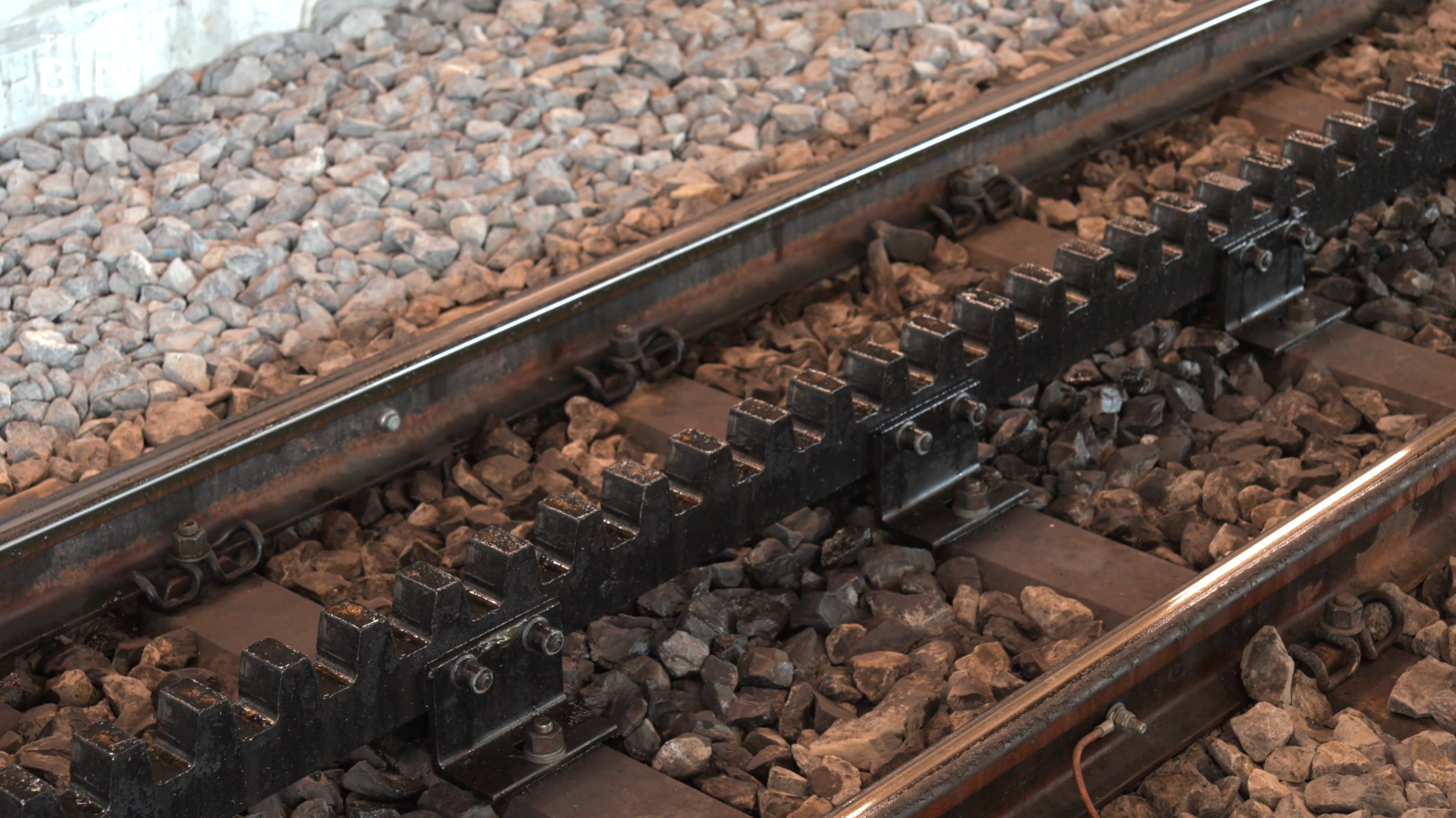
Above: A rack an pinion track system is needed to pull the train cars up the steep incline.
What you might be wondering is how the line is powered, given its construction began in the late 1800s and at the time, coal was king. Coal and steam in a tunnel wouldn't have been the best idea and so hydroelectric power access was needed, as explained by Kathrin Naegeli, Jungfrau Railways' Head of Corporate Communications:
"They had to have power somewhere and if you think we’re still in the 1800s or 1900s so they built a first hydro-powerplant near Lauterbrunnen. That's one part of the valley and then two, three years later they saw that it was already too small and so they built another hydro-powerplant in Lütschental, that’s the other valley, and that’s still the hydro-powerplant we use today."
The final stop on the Jungfrau Railway is Jungfraujoch Station, opened in 1912 and it takes you right beneath the Sphinx Observatory. Workers faced Alpine winters, a variety of rock layers, which at times had no intention of moving, and permafrost, where frozen rock would thaw and move, causing serious danger to workers but the access this station provides is crucial.
However, rail tracks can only get you so far - to reach the very top of the observatory, it takes yet another impressive bit of kit.
An Elevated Experience
In the 1990s, Schindler’s best in class engineers were tasked with fitting one of the fastest elevators in the whole of Europe.
The lift shaft itself is a pretty standard concrete lined system but what's interesting is how they built it. During construction, the rock surrounding the structure was solidified in permafrost. The issue, however, was that construction work raised temperatures by around 10 to 15°C and that was risky because it could have melted the permafrost and dislodged some of that rock, potentially collapsing the lift shaft around the workers.
The solution was to create a cooling system to keep the site at -1°C, preserving the permafrost and keeping the rock in place while the concrete shaft was installed.
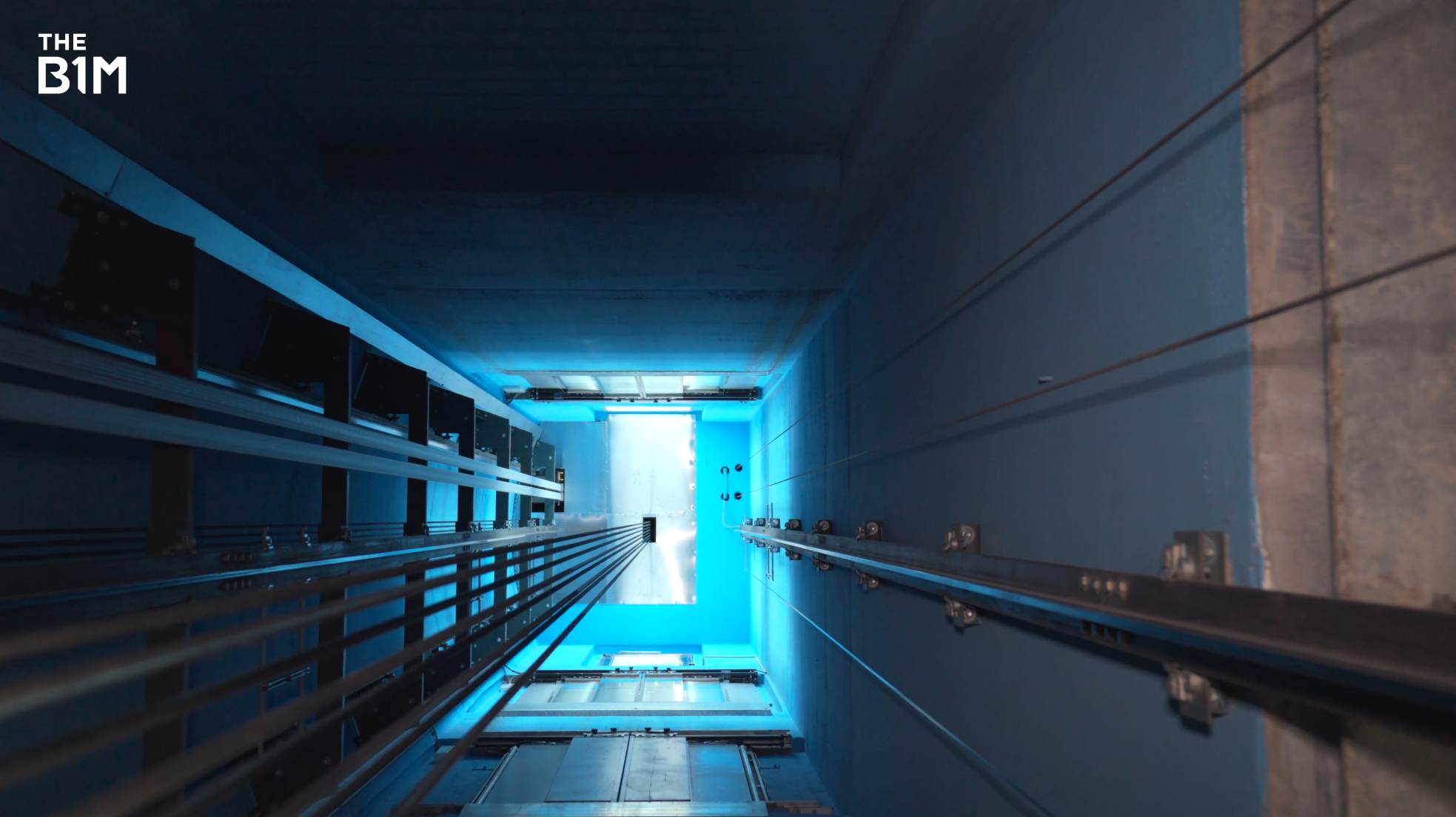
Above: The view from inside the Schindler lift shaft.
The shaft itself measures 119 metres tall and 6.5 metres in diameter. Two incredibly strong machines, weighing more than two tonnes, sit on top of the lift shafts pulling the lift cars up 108m in the space of just 25 seconds. At the top you’re then rewarded for your journey with some mesmerising views.
As you can imagine, this wasn’t your average lift installation. The challenges faced by the team fitting the kit were pretty unique but they took real pride in their work, as Kurt Weber, a retried Schindler technician explained:
"There's a particular relationship between them (Jungfrau Railways employees) and us. We exchanged phone numbers early on and I always told them, you can call me, even on Saturdays and Sundays. That reassured them personally. One of them called once while I was on holiday in Egypt and I was able to help him over the phone and he still reminds me of that today. It's definitely something special, something that cannot be taken for granted."
This twin lift has capacity to move literally thousands and thousands of visitors a day without the daunting queues and given how popular this place is, it's a game-changing enhancement.
The whole experience is a reminder of how construction makes the seemingly impossible, possible, whether it be the brave efforts of workers with little more than pick axes and explosives, a railway pieced together through a mountain or an ultrafast lift up to an observatory high in the clouds.
The Sphinx Observatory is a remarkable example of something we often take for granted - that construction has been shaping the world we live in for thousands of years, and we haven’t peaked yet.
Learn more about Schindler’s vertical mobility solutions here.
Additional footage and images courtesy of Jungfrau Railways and Schindler.
We welcome you sharing our content to inspire others, but please be nice and play by our rules.
